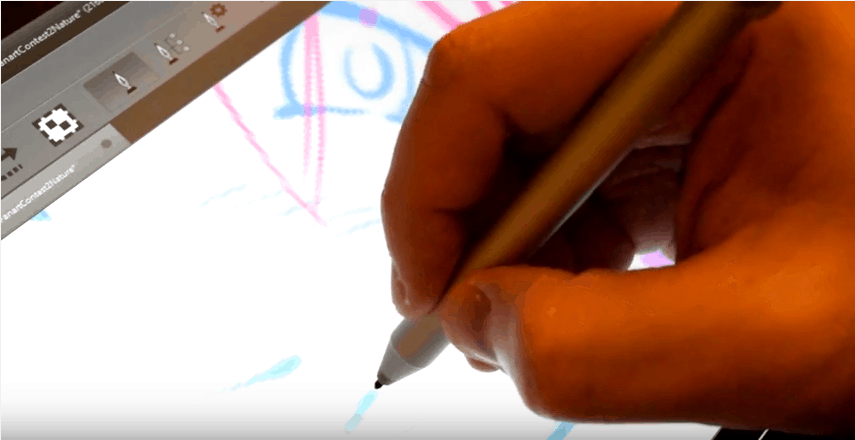The Surface Pen has been subject to no shortage of controversy every since Microsoft decided to switch from the mostly great Wacom pen tech to its own N-trig acquired tech in the third generation.
While the new N-trig tech offered some benefits, including more accurate pen tracking and useful functionality, it was a step back in many ways: the most important flaws of which were:
- Pen jitter when drawing slow, diagonal strokes.
- Poor and inconsistent recognition for low/light pressure input.
- Reduced levels of pressure sensitivity (down from 1024 to 256 levels)
- Noticeable latency (delay) with cursor tracking (but not really in actual drawing)
For the latest 4th generation of the Surface Pen, Microsoft is using improved N-trig technology combined with its own marketed G5 chipset and PixelSense technology. This fixes the pressure sensitivity, as it’s back up to 1024 levels, a difference which is noticeable. Cursor latency issues are also reduced, to the point where I doubt it’s an issue for most users.
The pen jitter issue still exists, albeit it’s reduced from before. While I am rarely inhibited by it, I can understand that it can be a deal breaker for many artists, and many were hoping that the Surface Pro 4 would fix those issues.
Software brush stabilization in painting applications like Clip Studio (Manga Studio 5) and add-on programs like LazyNezumi can mitigate, but not entirely eliminate this problem. While it’s easy to write the Surface Pro 4 off as a nonstarter of a drawing device by reading about this issue on the internet, I highly suggest actually trying the device out with your favorite software before writing it off, because as seen in my video, depending on how it’s used, the problem could be non-existent.
Another major issue, one that hasn’t been talked about quite as much, is that the N-trig based devices have a hard time recognizing very light pressure strokes. This issue is best demonstrated by the above video. While it’s improved from before, it still isn’t perfect, and for this particular issue, anything less than perfect means nothing. This issue, for me, is borderline a deal breaker, as I thoroughly enjoy drawing very lightly and am used to it from my other drawing tablet tools. Not having this intuitive freedom and having to work around it has been frustrating. Adjusting pressure curves on neither the Surface app nor the individual software have improved the situation, which is logical because the issue isn’t poorly calibrated pressure, but simply that the device doesn’t acknowledge the input.
In contrast, my experiences with the iPad Pro and the Apple Pencil produced had none of these issues. The only issues I noticed were a slight hesitancy in registering really light, short strokes, but even that isn’t really an issue, since it still faithfully captures the input.
The new Surface Pen, interestingly, also introduces other issues not present in the previous N-trig pen. The new eraser, while fabulous in feel, doesn’t have pressure sensitivity (as far as I can tell), which makes it cumbersome to use in actual drawing. While the previous pen didn’t have a physical eraser, it had a second eraser button on the side, which transformed the pen tip itself into the eraser, granting it pressure sensitivity.
So ultimately, while the 4th generation Surface Pen is an improvement, it doesn’t actually fix any of the fundamental flaws that held it back in the last generation. And that to me is a bit disappointing, considering how long the wait was between generations. What’s really frustrating is that the Surface Pro 4 is virtually the perfect drawing device otherwise: perfect display, virtually no parallax, ample processing power, perfect chassis and form factor, great size and weight, solid battery life, and access to the most powerful drawing software. In the end, I still advise anyone interested in the Surface Pro 4 to give it a shot, as depending on your drawing style you may not encounter any of the above issues: in which case you will have one heck of a drawing machine.


